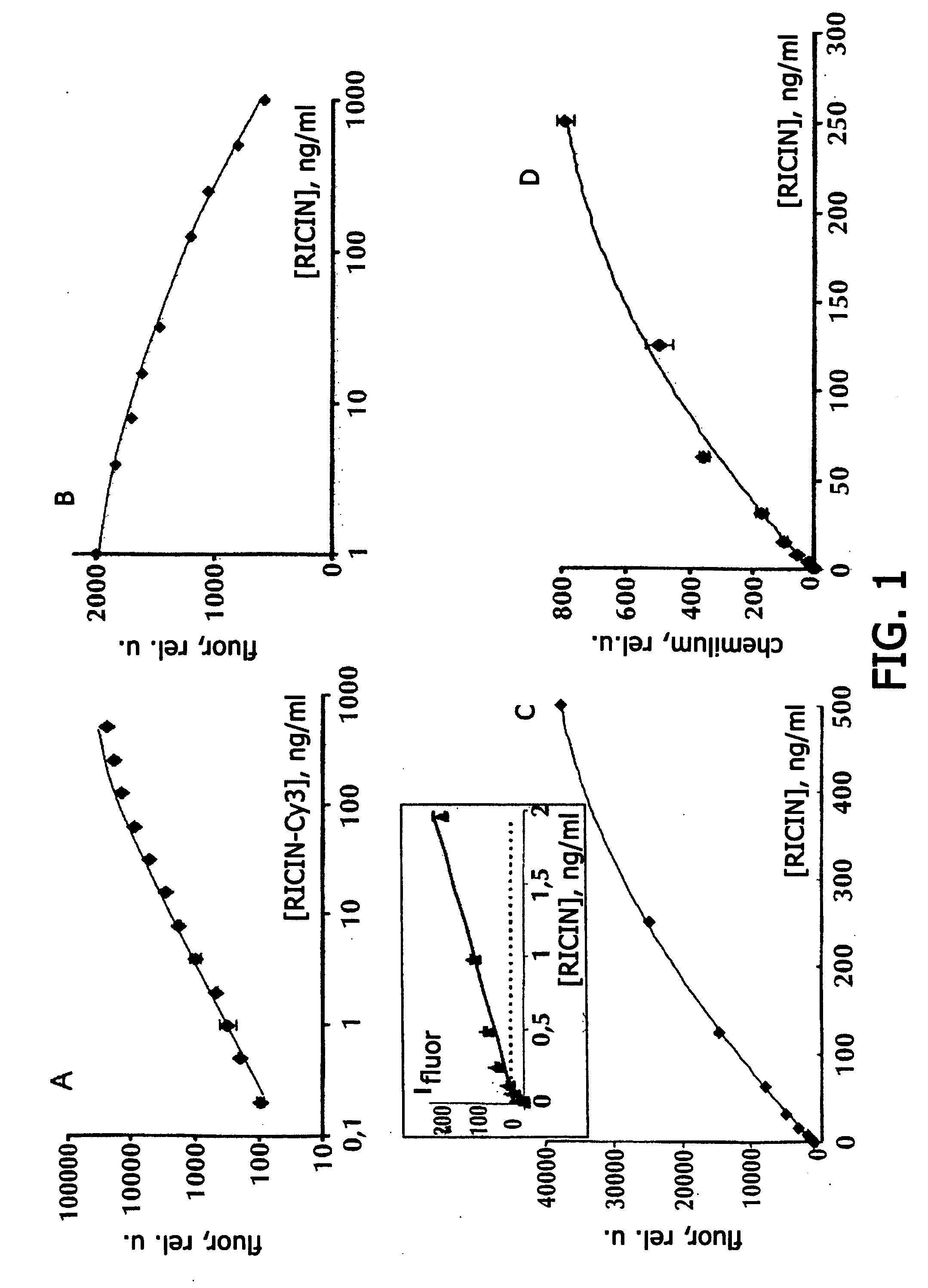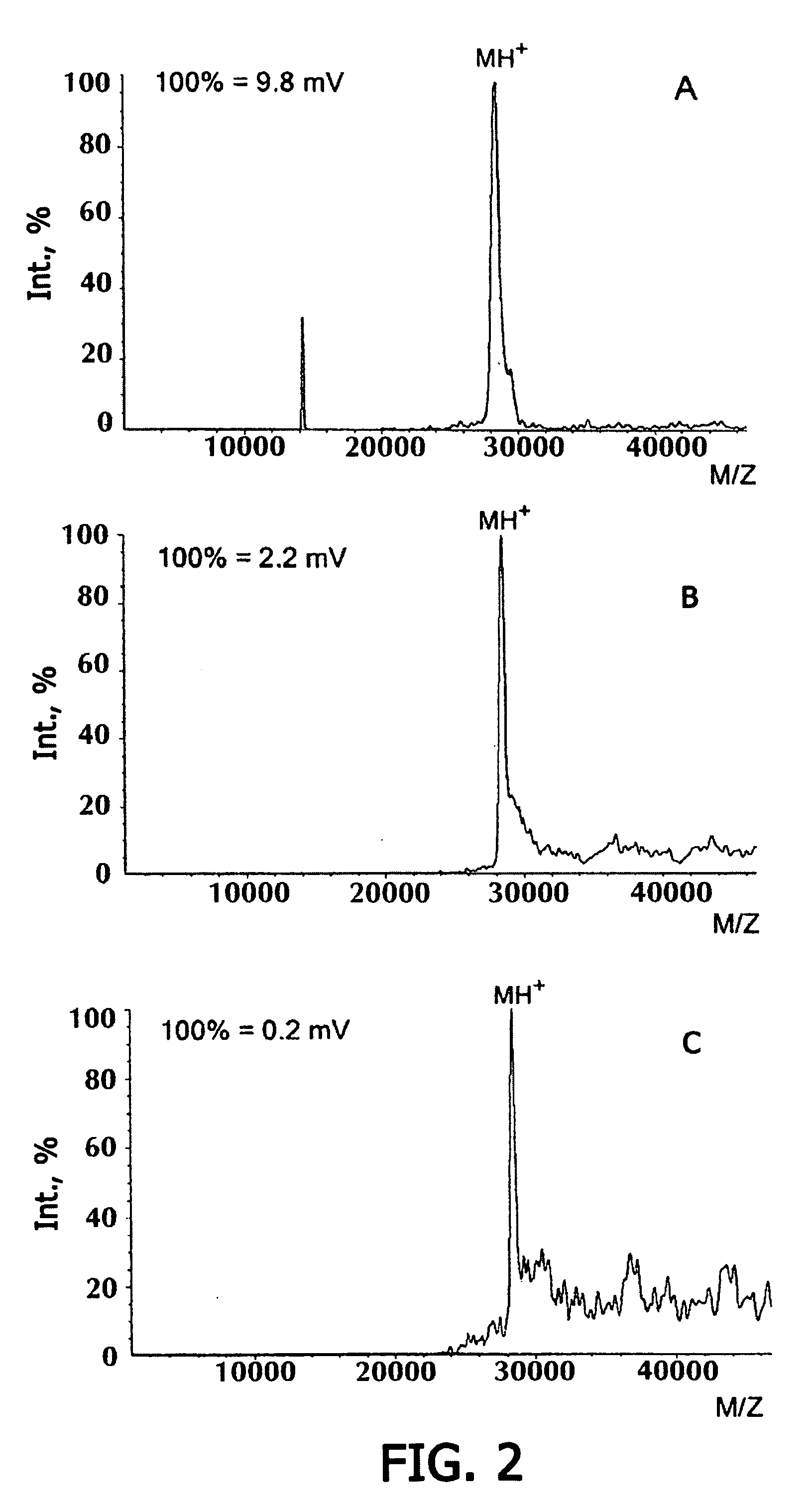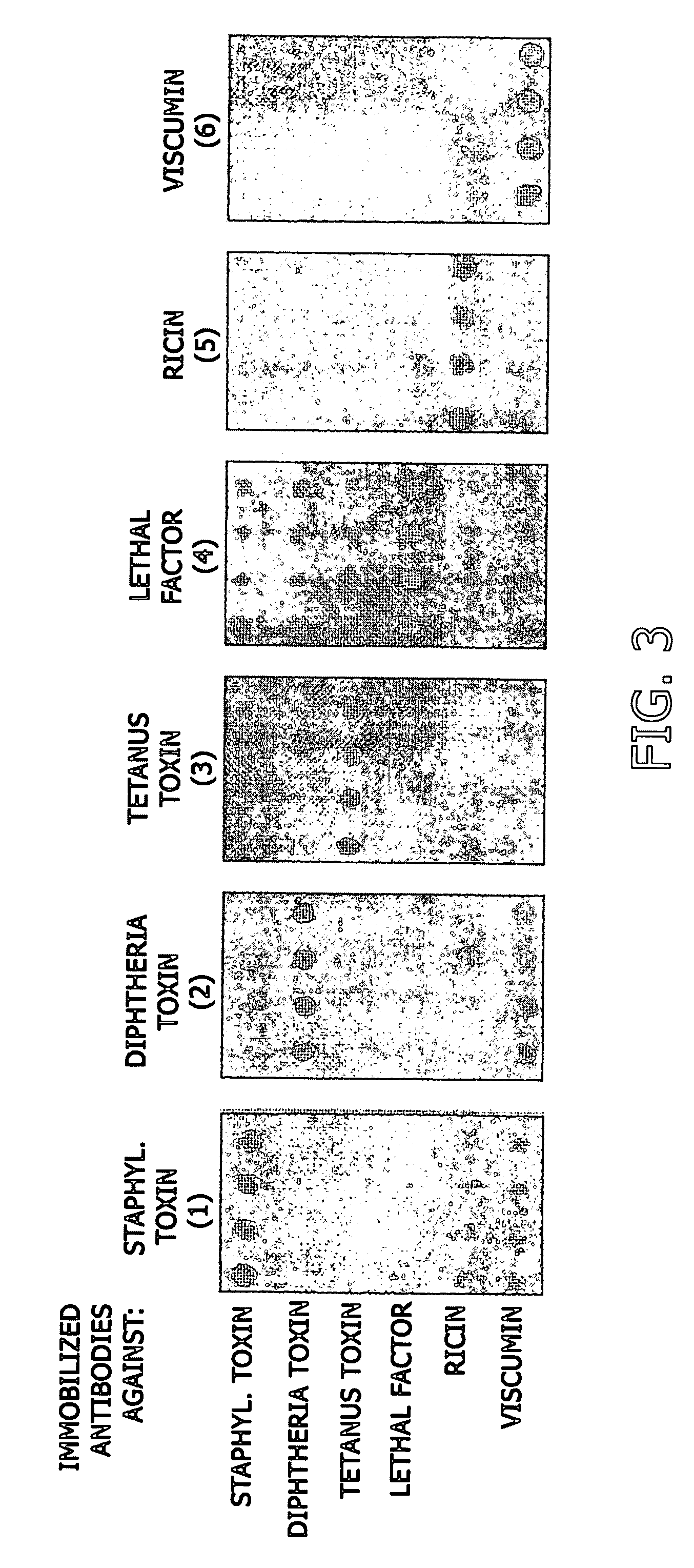Method for quantitative detection of biological toxins
a biological toxins and quantitative detection technology, applied in the field of analytical biochemistry and quantitative immunochemical analysis, can solve the problems of complicated and costly equipment, inability to carry out simultaneous analysis of several compounds, especially biotoxins, in a sample, and inability to carry out simultaneous tests
- Summary
- Abstract
- Description
- Claims
- Application Information
AI Technical Summary
Benefits of technology
Problems solved by technology
Method used
Image
Examples
example 1
Quantitative Immunoassay of Ricin Using Hydrogel Microchips
[0079] Hydrogel microchips containing immobilized antibodies against ricin and ricin were obtained by following the earlier patented polymerization immobilization technology [9]. For reducing non-specific interactions in all variants of analysis, microchips were pre-incubated in a 0.01 M phosphate buffer, pH 7.2, containing 0.15 M NaCl, 1% polyvinyl alcohol (PVA-50) or 3% bovine serum albumin (BSA) and 4% sucrose (“blocking buffer”), for 2 h at room temperature. Before carrying out the analysis, ricin solutions (sample solutions) were diluted with 0.01 M phosphate buffer, pH 7.2, containing 0.15 M NaCl, 0.15% PVA-50 and 0.15% polyvinyl pyrrolidone 360 (PVP-360).
[0080] Direct immunoassay. To microchips containing gel elements with immobilized monoclonal antibodies against ricin Rch1 and other biotoxins (antibodies against staphylococcal enterotoxin B S222, antibodies against tetanus toxin 3D2C6, antibodies against diphtheri...
example 2
Identification of Proteins on Microchip Gel Element by Direct Mass-Spectroscopic Analysis. Direct Analysis of Staphylococcal Enterotoxin B on Microchip with Mass-Spectroscopic Recording
[0093] Microchip has been manufactured, containing in gel elements immobilized monoclonal antibodies to staphylococcal enterotoxin B S222 (0.1 μg antibodies / gel element). After polymerization, the microchip was washed with 0.01 M phosphate buffer containing 0.15 M NaCl, 0.1% Tween-20, with stirring for 1 hour (20° C.). The microchip was incubated with a solution of staphylococcal enterotoxin in 0.01 M phosphate buffer, pH 7.2, containing 0.15 M NaCl (20 hrs, 20° C.), and further washed from the protein non-specifically bound to the gel, first by treating with 0.01 M phosphate buffer, pH 7.2, containing 0.15 M NaCl, 0.1% Tween-20 (2 hours with stirring, 20° C.). then with water. Before carrying mass-spectroscopic analysis, the antigen-antibody complex was destroyed and the antigen was eluted to the ge...
example 3
Quantitative Immunoassay of Various Biological Toxins, Using Hydrogel Microchips
[0095] The results of quantitative immunoassay of various biological toxins on gel microchips manufactured by the method of polymerization immobilization, are shown in Table 1. Besides the immunoassay of ricin, described in Example 1, immunoassay of viscumin, staphylococcal enterotoxin B, tetanus toxin, diphtheria toxin, and lethal factor of anthrax toxin was carried out. Direct, competitive and sandwich immunoassay with fluorescent and chemiluminescent recording was carried out by following the procedures described in Example 1, using the antibodies indicated in Table 1. Table 1 shows also the range of concentrations at which the dependence of the intensity of the fluorescent or chemiluminescent signal of the microchip gel cells on the biotoxin concentration was observed; the lower limit of the range corresponds to the detection limit calculated as described in Example 1.
PUM
 Login to View More
Login to View More Abstract
Description
Claims
Application Information
 Login to View More
Login to View More - R&D
- Intellectual Property
- Life Sciences
- Materials
- Tech Scout
- Unparalleled Data Quality
- Higher Quality Content
- 60% Fewer Hallucinations
Browse by: Latest US Patents, China's latest patents, Technical Efficacy Thesaurus, Application Domain, Technology Topic, Popular Technical Reports.
© 2025 PatSnap. All rights reserved.Legal|Privacy policy|Modern Slavery Act Transparency Statement|Sitemap|About US| Contact US: help@patsnap.com



